Kakia Chatsiou
Text Classification of Manifestos and COVID-19 Press Briefings using BERT and Convolutional Neural Networks
Nov 02, 2020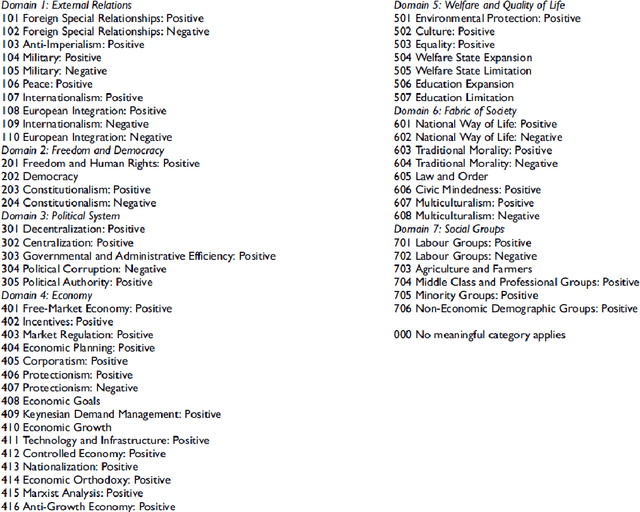
Abstract:We build a sentence-level political discourse classifier using existing human expert annotated corpora of political manifestos from the Manifestos Project (Volkens et al., 2020a) and applying them to a corpus ofCOVID-19Press Briefings (Chatsiou, 2020). We use manually annotated political manifestos as training data to train a local topic ConvolutionalNeural Network (CNN) classifier; then apply it to the COVID-19PressBriefings Corpus to automatically classify sentences in the test corpus.We report on a series of experiments with CNN trained on top of pre-trained embeddings for sentence-level classification tasks. We show thatCNN combined with transformers like BERT outperforms CNN combined with other embeddings (Word2Vec, Glove, ELMo) and that it is possible to use a pre-trained classifier to conduct automatic classification on different political texts without additional training.
Deep Learning for Political Science
May 13, 2020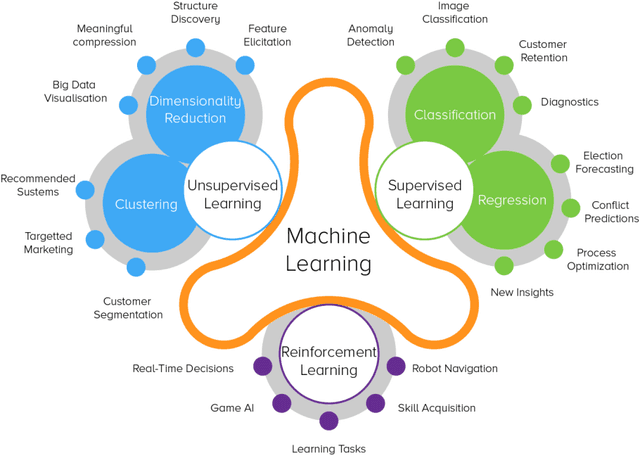
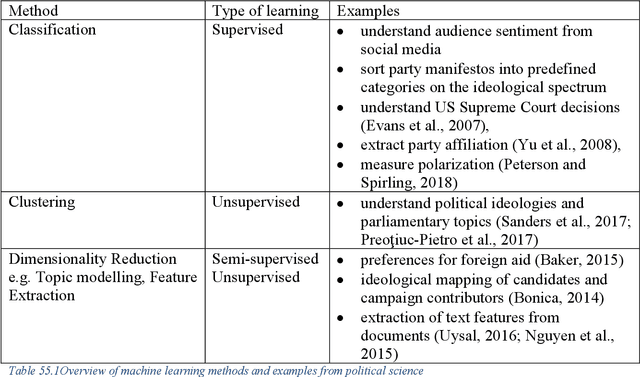
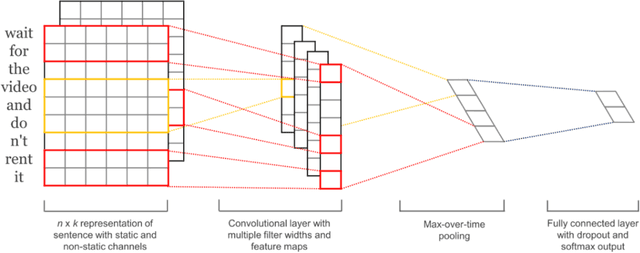
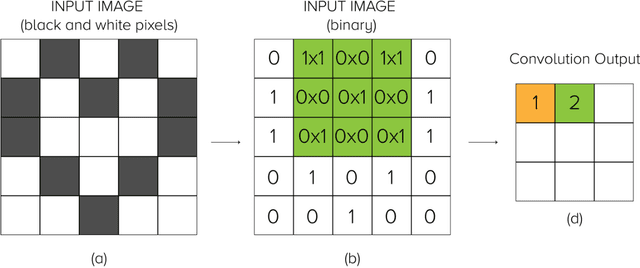
Abstract:Political science, and social science in general, have traditionally been using computational methods to study areas such as voting behavior, policy making, international conflict, and international development. More recently, increasingly available quantities of data are being combined with improved algorithms and affordable computational resources to predict, learn, and discover new insights from data that is large in volume and variety. New developments in the areas of machine learning, deep learning, natural language processing (NLP), and, more generally, artificial intelligence (AI) are opening up new opportunities for testing theories and evaluating the impact of interventions and programs in a more dynamic and effective way. Applications using large volumes of structured and unstructured data are becoming common in government and industry, and increasingly also in social science research. This chapter offers an introduction to such methods drawing examples from political science. Focusing on the areas where the strengths of the methods coincide with challenges in these fields, the chapter first presents an introduction to AI and its core technology - machine learning, with its rapidly developing subfield of deep learning. The discussion of deep neural networks is illustrated with the NLP tasks that are relevant to political science. The latest advances in deep learning methods for NLP are also reviewed, together with their potential for improving information extraction and pattern recognition from political science texts.
 Add to Chrome
Add to Chrome Add to Firefox
Add to Firefox Add to Edge
Add to Edge